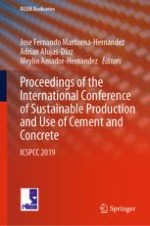2020 | OriginalPaper | Chapter
Using a Physical Model Based on Particle Mobility for Mix Design of Commercial Concretes in Order to Increasing Eco-Efficiency
Authors : Mariana Menezes, Rafael G. Pileggi, Markus Rebmann, Carlos Massucato
Published in: Proceedings of the International Conference of Sustainable Production and Use of Cement and Concrete
Publisher: Springer International Publishing
Activate our intelligent search to find suitable subject content or patents.
Select sections of text to find matching patents with Artificial Intelligence. powered by
Select sections of text to find additional relevant content using AI-assisted search. powered by
